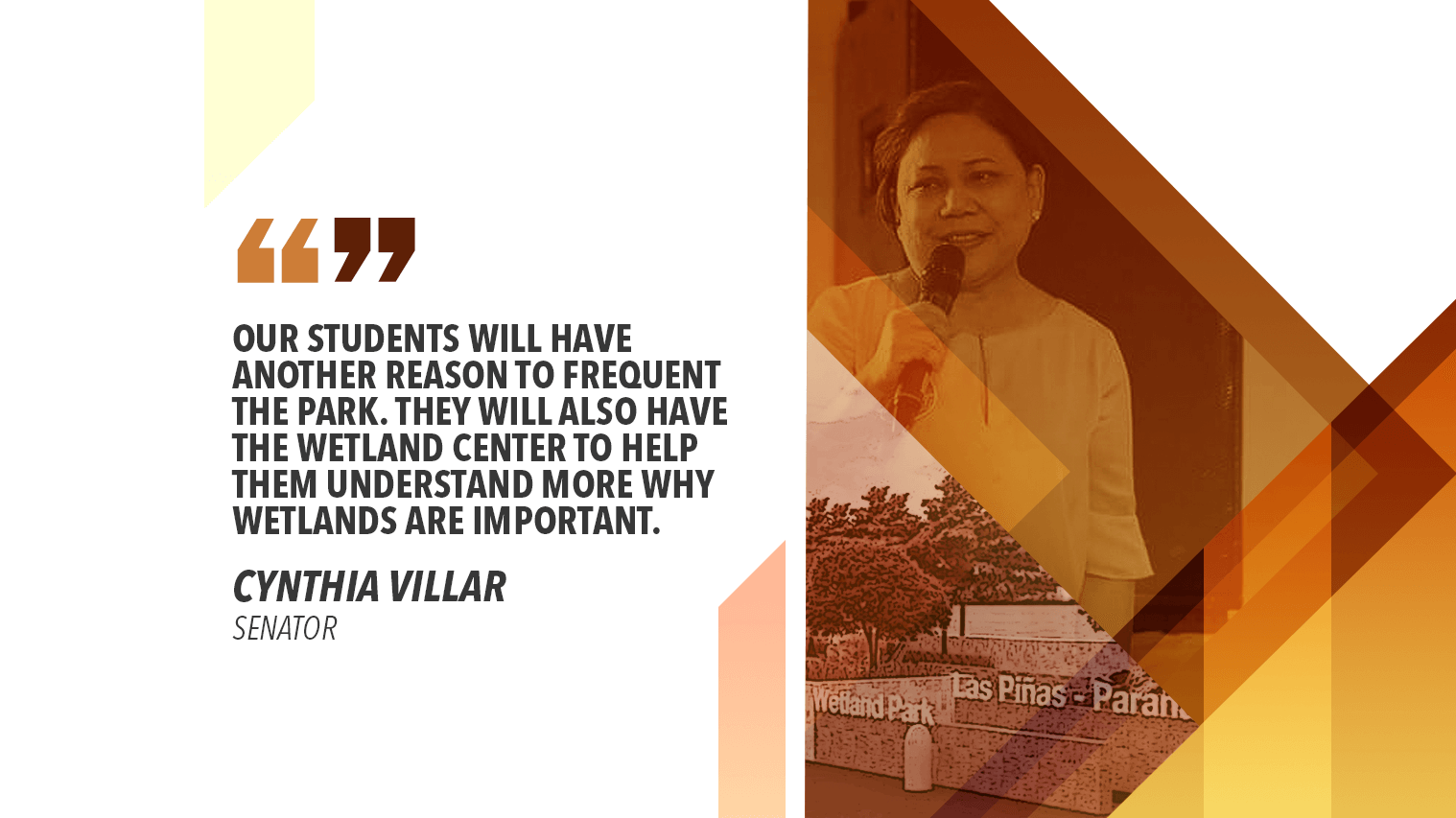Senator Cynthia Villar has announced the rise of a wetland center that will help educate students on the importance of wetland and wildlife conservation.
During the photo exhibit showcasing the work of wild bird photographer Ed Santos at Solaire in Parañaque, Villar said a wetland center will be built at the Las Piñas-Parañaque Wetland Park before the end of the year.
“Soon, our students will have another reason to frequent the park, not only for cleanup and tree-planting activities, they will also have the wetland center to help them understand more why wetlands are important,” the seasoned legislator said.
The chairperson of the Senate committee on environment and natural resources also stressed that the conservation of wetlands like the Las Piñas-Parañaque Wetland Park, is a strategy to mitigate the effects of climate change.
“For one, natural features of wetlands such as mangrove trees serve as barriers that protect communities against storm surges and flooding,” the veteran lawmaker added.
“Mangrove trees serve as barriers that protect communities against storm surges and flooding.”
The wetland center, which is a donation from the Villar family, will house a restaurant, a training center, a museum, a souvenir shop and a satellite office of the Department of Environment and Natural Resources.
The ground-breaking was held last February. They are awaiting the go-signal of the Philippine Reclamation Authority to begin construction.
The 175-hectare Las Piñas-Parañaque Wetland Park is a Wetland of International Importance as declared by the Ramsar Convention for its critical role in the survival of threatened, restricted-range and congregatory bird species.
“The 175-hectare Las Piñas-Parañaque Wetland Park is a Wetland of International Importance.”
One percent of the remaining black stilts can be found here, or 1,000 of the remaining 100,000 in the world.
The wetland ecosystem is also home and known breeding area of Philippine ducks, a vulnerable species as listed by the International Union for Conservation of Nature and Natural Resources. Chinese egret, Common greenshank, and Black-winged stilts are also found here along with 82 other wild bird species coming from as far as China, Japan and Siberia.
It has 30 hectares of mangrove forest, accepted as the thickest and most diverse in Manila Bay. To date, 11 species of mangroves are growing in the area. It is also a declared protected area under the Villar-authored Republic Act 11038 or the law expanding the National Integrated Protected Areas System (E-NIPAS).
Aside from this wetland, six other Ramsar sites are found in the Philippines, namely: the Puerto Princesa Subterranean River National Park in Palawan, the Tubbataha Reefs National Marine Park in Sulu, the Agusan Marsh Wildlife Sanctuary in Agusan del Sur; 4, the Naujan Lake National Park in Oriental Mindoro, the Olango Island Wildlife Sanctuary in Cebu and the Negros Occidental Coastal Wetlands Conservation Area in Negros Occidental.
The lady senator has been in the forefront of the campaign to conserve and promote the Las Piñas-Parañaque Wetland Park. She regularly conducts cleanup, tree planting, and bird watching activities in the area together with representatives from government and private organizations, residents and students.


